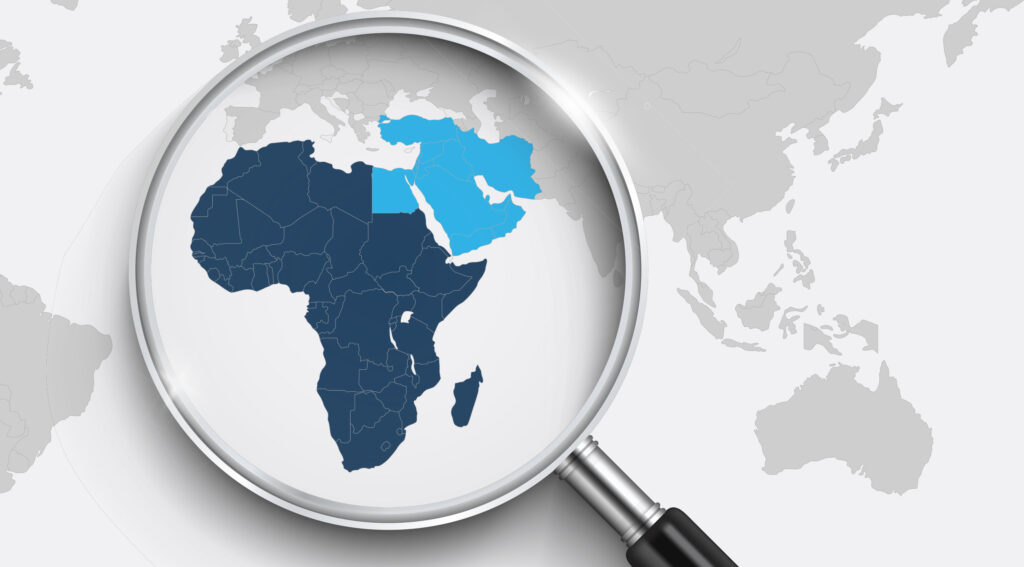Geo-political forces continue to play an important role in setting the agenda across the Middle East and Sub-Saharan Africa. While the region presents many lucrative opportunities, it also poses many risks, which creates a difficult balance to get right. An overreaction, or oversimplification, of these issues will signal to staff, business partners, regulators, and other stakeholders that an organisation has a superficial understanding of – and indeed, attitude towards – the region.
The question, then, is how to ensure businesses can function safely and productively, protecting people and investments, without resorting to knee-jerk reactions to challenges that arise.
To do this, it is essential to create a strategy that moves risk management from the periphery of the business to its core. This approach will yield a view of real as opposed to perceived risk, improving the resilience of the business to external factors. And while it’s not a difficult transition to make, it does require a systematic approach.
Defining risk
Risk is a complex ecosystem. Companies must definitively understand the types of risk most likely to affect their operations. Misunderstandings and misalignments are rife in this area, and it is essential to establish a common vocabulary that applies throughout the organisation.
Geopolitical risk refers to the wide array of risks associated with any sort of conflict or tension between states. It has a clear impact on innovation, global trade, security, and political relations. This type of risk directly affects operations, performance, and the people working in global businesses.
Country-level risk is an indicator only of business risk inside a country, affected by economic, demographic, political, legal, and social factors – such as nationalisation of industries, etc. With the correct risk management strategy in place, companies can operate prosperously where others overlook and miss out, or otherwise fail through a lack of understanding, ineffective planning, or an inappropriate approach.
Regulatory risk is posed by potential changes in regulations or legislation locally, or in the place of domicile and can increase costs of operations, introduce legal and administrative hurdles, and sometimes even restrict a company from doing business altogether.
Societal risk is defined as the risk posed to the wider population that may be affected by hazardous incidents.
It is evident there is an interplay between these various types of risk that can affect an organisation. To best navigate this, the ideal approach is to create a custom amalgamated view of georisk: namely, the risk faced in the region based on the location, its people, industry, markets, and nature of the organisation.
What this approach should look like
Once the baseline definition for georisk has been established, it’s important to define how the organisation should view, track, and respond to it. Here are the aspects that you need to consider while developing this strategy.
- Corporate purpose: How does the Middle East & Africa region affect how the company intends to create value now and in the future? How does it feature in the organisation’s long-term ambitions? Is it a key market for growth, a source for production or a base for innovation, etc? Does an increase in georisk threaten the company’s purpose?
- External environment: How does risk in the region influence the company’s growth drivers and competitive environment? Does it affect suppliers and customers, put revenues at risk, drive up material costs, or affect the company’s global market position in some other way? Can it unlock business opportunities? Is there an opportunity to develop a competitive advantage?
- Strategy, goals, and KPIs: Having established these parameters, it is now time to get more tactical. How does the region affect the company’s strategic plan, goals and KPIs? Set a timeframe when analysing this – a five-year and one-year timeframe will enable organisations to balance the long- and medium-term views. To what extent does georisk affect sales, income and earnings’ projections and goals? Does georisk or relevant commitments impact KPIs like profitability, revenue growth, and costs? Are new KPIs needed?
- Investments: How does it affect the company’s capital allocation plan? Will existing capital assets be impacted by the physical or transitional impacts of georisk? Are any capital assets at risk of being stranded, and what is the strategy for protecting at-risk assets?
- Accountability: How is the company structured to allow for the integration of regional risk perspective into the overall business strategy? How does the company’s board oversee georisk? Is the responsibility for overseeing and responding to georisk spread across corporate leadership? How fluent is the board and senior management on the impact of georisk?
It is essential for global organisations with serious ambitions within the region to move from defensive risk management into a long-term, holistic position based on deep insight into real risk and transform it into sustainable opportunity.
Having access to timely and actionable information is key to building a resilient, informed, and effective organisation. As such, companies must seek out partners who can provide in-depth situational awareness with a deep understanding of the complexity of the environments in which people operate.
For more information on how to plan for a strategic approach to georisk, call us at +971 4 363 5392 or email info@intelyse.com.

